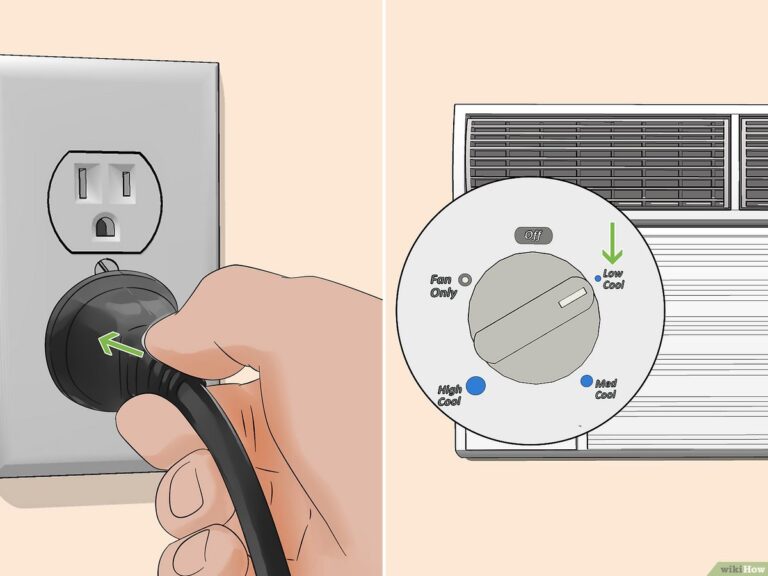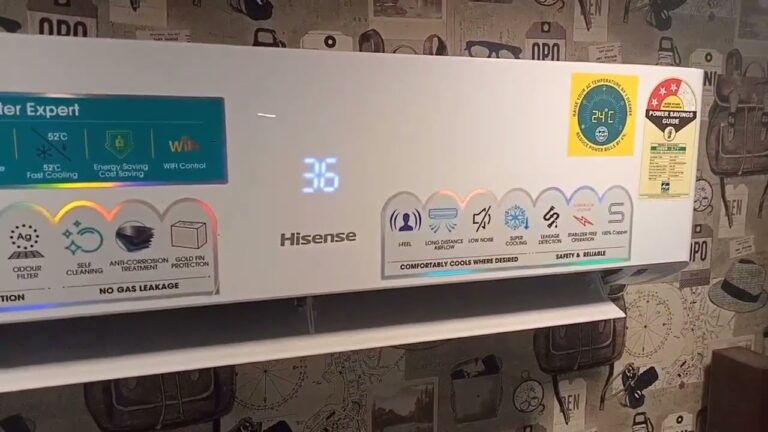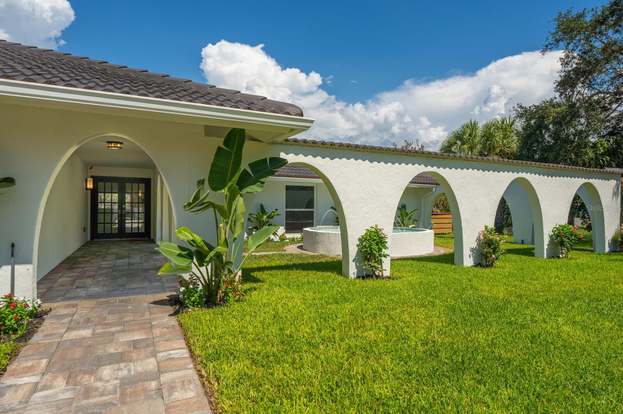How Do I Drain My Toshiba Portable Air Conditioner: Essential Tips
To drain your Toshiba portable air conditioner, simply locate the drain plug on the back of the unit, remove it, and let the water drain away. This will help remove any standing water inside the unit.
Understanding The Drainage System Of Toshiba Portable Air Conditioner
To drain your Toshiba portable air conditioner, locate the drain plug on the back of the unit and remove it. This will allow any excess moisture to drain away, ensuring proper functioning of the system.
R drainage system. Understanding how the drainage system works in Toshiba portable air conditioners is essential to ensure proper maintenance and avoid common drainage issues. In this section, we will explore the importance of proper drainage, the functioning of the drainage system, and common problems related to drainage in Toshiba portable air conditioners.
The Importance Of Proper Drainage In Toshiba Portable Air Conditioners:
- Efficient cooling: Proper drainage ensures that the condensation produced during the cooling process is effectively removed from the air conditioner. This allows the unit to operate at its optimal capacity, providing efficient cooling performance.
- Preventing water damage: If the condensation is not properly drained, it can accumulate inside the air conditioner and potentially cause water damage to the unit and the surrounding area. Proper drainage helps prevent water leakage and moisture buildup.
- Maximizing lifespan: By maintaining proper drainage, you can extend the lifespan of your Toshiba portable air conditioner. Accumulated moisture can lead to corrosion and damage internal components, reducing the overall durability of the unit.
How The Drainage System Works In Toshiba Portable Air Conditioners:
- Gravity drainage: Toshiba portable air conditioners are equipped with a drain hose that allows for gravity drainage. The unit is designed to utilize the force of gravity to direct the condensation to an appropriate location for disposal.
- Drainage hose: The drain hose is connected to the air conditioner and should be directed towards a suitable drainage point, such as a floor drain, sink, or bucket. The hose allows the condensed water to flow out of the unit through a designated pathway.
- Self-evaporating feature: Some Toshiba portable air conditioners also feature a self-evaporating function. This function helps minimize the amount of condensation produced by the unit, reducing the need for frequent drainage. However, it is still important to ensure that the drainage system is functioning properly.
Common Issues Related To Drainage In Toshiba Portable Air Conditioners:
- Clogged drain hose: Over time, the drain hose may become clogged with debris, preventing proper water drainage. Regular maintenance and cleaning of the drain hose can help prevent clogs and ensure smooth drainage.
- Improper installation: If the drain hose is not correctly connected or positioned, it may hinder proper drainage. Make sure the hose is securely attached and directed towards a suitable drainage point.
- Leaks and water accumulation: If you notice leaks or water accumulation around the unit, it may indicate a drainage problem. Check for any blockages or kinks in the drain hose and clear them if necessary.
- Insufficient drainage capacity: In some cases, the standard drain hose provided with the Toshiba portable air conditioner may not be long enough to reach a suitable drainage point. You may need to use an extension hose or find an alternative drainage solution.
By understanding the importance of proper drainage, how the drainage system works, and common issues related to drainage in Toshiba portable air conditioners, you can ensure optimal performance of your unit and avoid any potential problems. Regular maintenance and attention to the drainage system will help prolong the lifespan of your air conditioner and provide efficient cooling throughout its lifetime.
Finding The Drainage Hole In A Toshiba Portable Air Conditioner
To drain your Toshiba portable air conditioner, locate the drainage hole on the back of the unit and remove the drain plug. Let the excess water drain away in a suitable location.
Ld-up becomes excessive. To ensure that your Toshiba portable air conditioner functions properly, it is important to know how to locate and access the drainage hole. In this section, we will discuss the steps to find the drainage hole in a Toshiba portable air conditioner.
Locating The Drainage Hole In Toshiba Portable Air Conditioners:
- First, locate the back or bottom of your Toshiba portable air conditioner. This is where you will find the drainage hole.
- Look for a small opening or slot. This is the drainage hole through which the excess moisture will be released.
- The drainage hole is usually equipped with a rubber stopper or a screw-on cap to prevent any leaks.
Now that you know where to find the drainage hole, let’s move on to the steps to access it.
Steps To Access The Drainage Hole From Outside The Window:
- Start by opening the window where your Toshiba portable air conditioner is installed.
- Locate the drain hose at the back or bottom of the unit.
- Gently pull out the hose from the drainage hole.
- Place a container or a bucket below the hose to collect the water.
- Make sure the hose is securely attached to the drainage hole so that there are no leaks.
- Once the container is in place, the excess moisture will flow through the drain hose and into the container.
If accessing the drainage hole from outside the window is not possible or convenient for you, there are alternative methods you can try.
Alternative Methods To Access The Drainage Hole If Outside Access Is Not Possible:
- Use a plastic condensate pump: This device is designed to pump out the water from your portable air conditioner, bypassing the need for an external drainage system. Simply connect the pump to the drainage hole and let it do the work.
- Use a condensate removal kit: This kit includes a pump, tubing, and other necessary components to remove the water from your Toshiba portable air conditioner. Follow the manufacturer’s instructions for proper installation and setup.
Remember to check the drainage hole regularly and keep it clean to ensure proper functioning of your Toshiba portable air conditioner. Now that you know how to locate and access the drainage hole, you can effectively maintain your air conditioner and enjoy its cooling benefits without any worries about excess moisture buildup.
Proper Techniques To Drain A Toshiba Portable Air Conditioner
To drain your Toshiba portable air conditioner, locate the drain plug on the back of the unit and remove it. This will allow any excess moisture to drain away, preventing the need for frequent recharging.
When it comes to properly draining your Toshiba portable air conditioner, it is important to follow the correct techniques to ensure optimal performance and prevent water leakage. Here, we will provide step-by-step instructions for both fully draining the unit and partially draining it, as well as offer tips and best practices to help you maintain the drain hose effectively.
Fully Draining A Toshiba Portable Air Conditioner
To fully drain your Toshiba portable air conditioner, follow these simple steps:
- Locate the drain plug: Look for a small hole or plug at the bottom or back of your air conditioner unit. This is where the excess water will be drained.
- Prepare a drainage container: Place a suitable container or tray beneath the drain plug to collect the water.
- Remove the plug: Carefully remove the drain plug, ensuring that the drainage container is properly positioned to catch the water.
- Let the water drain: Allow the water to flow freely from the unit into the container until there is no more water coming out.
- Replace the plug: Once the unit is fully drained, securely reinsert the drain plug.
Tips To Prevent Water Leakage During The Draining Process
To prevent water leakage during the draining process, keep the following tips in mind:
- Place a towel or absorbent mat beneath the unit to catch any drips or spills.
- Regularly check the drainage container to avoid overflow.
- Keep the unit on a level surface to ensure proper drainage.
- Avoid tilting or moving the unit while draining to prevent water splashing or spills.
Best Practices For Maintaining The Drain Hose
Proper maintenance of the drain hose is crucial to prevent clogs and ensure efficient drainage. Here are some best practices to follow:
- Regularly inspect the drain hose for any blockages or kinks.
- Clean the drain hose with a mixture of mild soap and water to remove any debris or dirt.
- Ensure that the drain hose is securely connected to both the unit and the drainage container to prevent leaks.
Partially Draining A Toshiba Portable Air Conditioner
Partial drainage is another option for when you don’t need to fully empty the unit. This is particularly useful if you want to reduce humidity or prevent water buildup in the unit. Here’s how to perform partial drainage without fully emptying the unit:
- Follow the steps mentioned above for locating the drain plug and preparing a drainage container.
- Instead of fully removing the drain plug, only loosen it slightly to allow a controlled amount of water to drain out.
- Monitor the water flow and stop draining when you have achieved the desired level of partial drainage.
Benefits Of Partial Drainage
Performing partial drainage of your Toshiba portable air conditioner offers several benefits:
- Reduces humidity levels in the room, making it more comfortable.
- Prevents excess water buildup in the unit, safeguarding against potential leaks or damage.
- Helps maintain optimal performance and energy efficiency of the air conditioner.
Frequency Of Partial Drainage For Optimal Performance
The frequency of partial drainage depends on factors such as humidity levels and usage patterns. However, it is generally recommended to perform partial drainage every few days or whenever you notice excessive water accumulation.
By following these proper drainage techniques for your Toshiba portable air conditioner, you can ensure optimal performance, prevent water leakage, and maintain the unit effectively. Remember to regularly inspect and clean the drain hose to keep your air conditioner running smoothly.
Troubleshooting Common Drainage Issues In Toshiba Portable Air Conditioners
If you’re wondering how to drain your Toshiba portable air conditioner, you’re in luck. These units are designed to drain any excess moisture through a drain hose once the water level in the buildup skillet reaches a certain level, eliminating the need for frequent recharging.
Clogging Of The Drain Hose:
- Debris or dust can often accumulate in the drain hose of Toshiba portable air conditioners, leading to clogs.
- If the drain hose is clogged, it can prevent proper drainage and cause water buildup in the unit.
Signs Of A Clogged Drain Hose:
- Water pooling in the bottom tray of the air conditioner.
- Overflow or leakage from the sides or back of the unit.
- Reduced cooling efficiency.
Steps To Unclog A Drain Hose In Toshiba Portable Air Conditioners:
- Turn off and unplug the air conditioner to avoid any electrical mishaps.
- Locate the drain hose at the back or bottom of the unit.
- Use a soft cloth or sponge to clean any visible debris or dust from the hose.
- Gently insert a long, flexible brush into the drain hose to remove any stubborn clogs.
- Rinse the drain hose with water to flush out any remaining debris.
- Ensure the drain hose is securely re-attached to the unit before using it again.
Preventive Measures To Avoid Drain Hose Clogs:
- Regularly clean and maintain the air conditioner to prevent the accumulation of debris.
- Install a drain pan or tray under the unit to catch any excess water.
- Avoid placing the air conditioner in areas with high humidity or dust accumulation.
Insufficient Drainage:
- Insufficient drainage can occur if the drain hose is not properly installed or if there is a blockage in the condensate drain line.
- This can result in water not being effectively removed from the unit.
Reasons Behind Insufficient Drainage In Toshiba Portable Air Conditioners:
- Improper installation of the drain hose.
- Blockage in the condensate drain line.
- Low or inadequate slope on the drain hose.
Solutions To Improve Drainage Efficiency:
- Check the installation of the drain hose to ensure it is properly connected and positioned.
- Inspect the condensate drain line for any clogs or obstructions and clear them if necessary.
- Ensure the drain hose has a sufficient slope to allow proper water flow.
- Regularly clean and maintain the air conditioner to prevent any obstructions.
Maintenance Tips To Ensure Proper Drainage:
- Clean or replace the air filter regularly to prevent clogs.
- Check and clean the condensate drain line periodically to remove any debris.
- Ensure there are no air leaks or loose connections in the drain hose or condensate drain line.
- Keep the surrounding area of the air conditioner clean and free from dust or debris.
Water Leakage During Drainage:
- Water leakage during the draining process can occur due to various reasons, such as a damaged drain pan or improper installation.
- It can lead to damage to the air conditioner and surrounding environment.
Causes Of Water Leakage During The Draining Process:
- Damaged or cracked drain pan.
- Incorrect installation of the drain hose or condensate drain line.
- Excessive water accumulation due to clogged drain hose or condensate drain line.
Troubleshooting Steps To Prevent Water Leakage:
- Check the drain pan for any cracks or damage and replace if necessary.
- Ensure the drain hose and condensate drain line are properly installed and secured.
- Clear any clogs or obstructions in the drain hose or condensate drain line.
- Regularly inspect and clean the drain pan to prevent water accumulation.
Remember to maintain a conversational tone throughout the content and ensure that each H3 heading is clearly marked with the Markdown syntax (###).

Credit: m.youtube.com
Frequently Asked Questions Of How Do I Drain My Toshiba Portable Air Conditioner
How Do I Get Water Out Of My Toshiba Portable Air Conditioner?
To get water out of your Toshiba portable air conditioner, simply locate the drain plug on the back of the unit and remove it. The excess moisture will drain away through the plug.
Do I Need To Drain Toshiba Portable Ac?
No, you do not need to drain your Toshiba portable AC. It will automatically drain excess moisture through its drain hose.
Where Is The Drain On A Toshiba Window Air Conditioner?
The drain on a Toshiba window air conditioner is located underneath the exterior part that hangs out of the window. You will need to access it from outside or remove the AC from the window.
How Do You Drain Water From A Portable Air Conditioner?
To drain water from a portable air conditioner, carefully move the unit to a drain location and remove the bottom drain plug. Let the water drain away.
Conclusion
If you own a Toshiba portable air conditioner, you may be wondering how to properly drain it. Fortunately, you don’t need to manually drain the unit frequently as it is designed to handle excess moisture on its own. The air conditioner will drain any extra moisture through its drain hose once the water level in the buildup skillet reaches a certain level.
This means you won’t have to constantly worry about recharging the unit or dealing with excessive water buildup. To access the drain on a Toshiba window air conditioner, you will need to locate the drain plug on the back of the unit.
Simply remove the plug to allow the water to drain out. Additionally, if you have a portable air conditioner, carefully move the unit to a drain location and remove the bottom drain plug to let the water drain away. It’s important to note that even after draining, some standing water may still remain inside the unit.
If you encounter any issues with draining, it is recommended to seek assistance from a professional.






